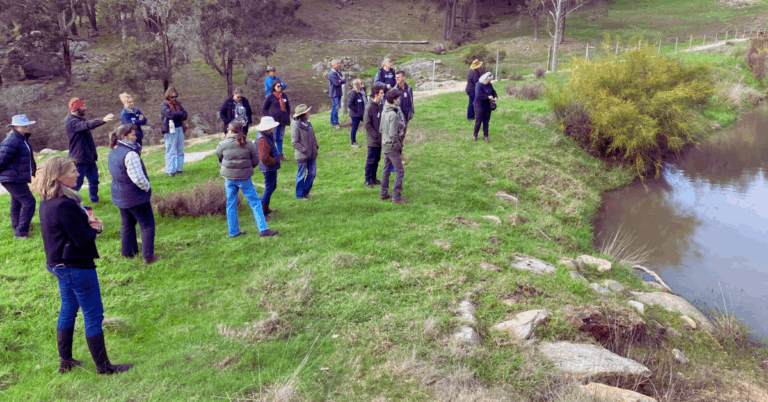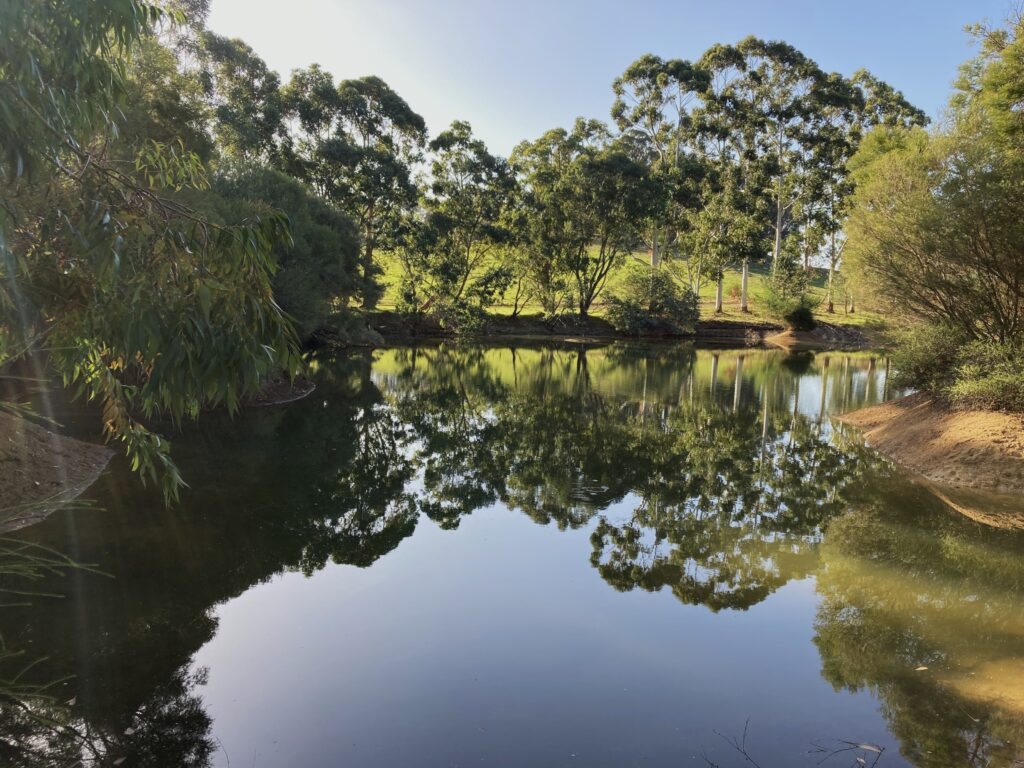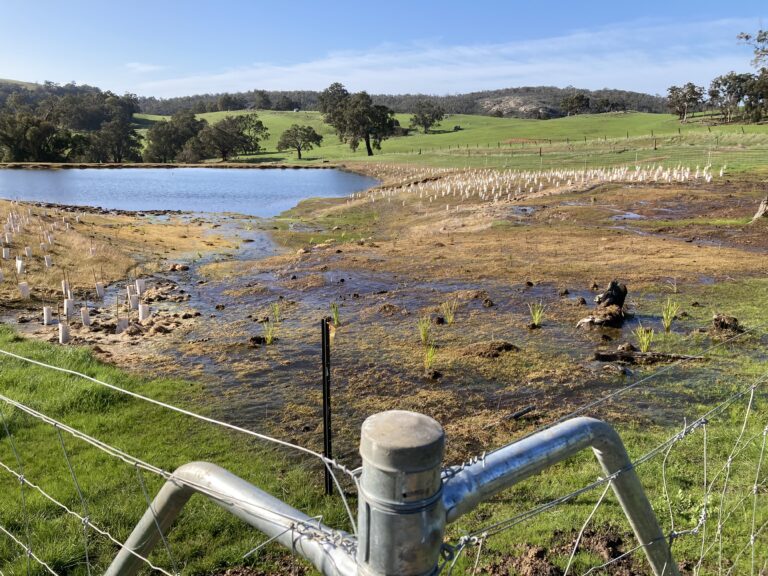
Consultant Chris Howe explaining revegetation techniques at Enhancing Farm Dam event in Burekup.
Enhancing Farm Dams - Win/win for livestock and wildlife
Did you know there are more than 1.7 million farm dams in Australia? Their purpose is typically for livestock or other forms of agricultural production but they can also support native wildlife and personal wellbeing too.
These co-benefits increase when dams are “enhanced” with fencing and revegetation, which can also improve water quality and livestock productivity.
South West NRM recently supported Leschenault Catchment Council and Blackwood Environment Society to host “Enhancing Farm Dam” field days in Burekup and Bridgetown to raise awareness of the benefits.
The field days form part of South West NRM’s recently-announced Farm Efficiencies and Sustainability Towards 2030 Project.
Research into enhanced farm dams has been led for several years by the Australian National University’s Sustainable Farms.
This includes a citizen science project that detected 107 species of frogs in 8,800 farm dams. Twenty percent of Australian frogs are threatened with extinction. Of the 104,000 audio recordings taken in the project, five percent were from threatened species.
Enhanced farm dams also increase species richness of birds, with the study concluding that farm dams provide important benefits for farmland birds.
The Bridgetown event also emphasized the value of dams to native fish. Local environmental consultant Mike Christensen believes it’s vitally important that more farm dams are revegetated.
“Personally, I think farm dams are going to be one the most critical parts for our conservation efforts going into the future,” Mike said.
At Burekup, revegetation specialist Chris Howe said:
“You’re actually getting a service from attracting a more diverse fauna population to your property,” he said.
“You’re going to get pollinator species and insectivorous birds which take pests off the other plants you’re growing on your farm. By increasing biodiversity on your property, you get these flow-on benefits to other parts of the farm.”
And how’s the serenity!
Enhanced dams provide a place to “get away” from the farm, as explained by local Thomson Brook and Winnejup farmers in this 3min video and pictured below.

But the benefits aren’t just secondary to production. Enhanced farm dams can also have direct benefits by improving water quality. Preliminary work has shown that fencing farm dams to limit stock access is characterised by significantly lower E.coli, nitrogen and phosphorus.
But even bad taste can affect production, as South West NRM Sustainable Agriculture Manager Peter Clifton explained at both events.
“Poor water quality can affect taste, meaning livestock don’t drink as much as they should,” he said.
“If they don’t drink, they don’t eat enough, which means they are not putting on as much weight as they could. Then if water is very poor we may see scouring, phosphorus deficiency, disease and other health concerns.”
While there haven’t been many Australian studies done on the relationship between water quality and animal weight gain, this is about to change with Grower Group Alliance collaborating with the University of Adelaide to conduct research under the new “Ripple” project. But despite the lack of local data, there has been a cost-benefit analysis done by Sustainable farms ANU.
Their analyses suggests that on higher stocked farms (0.7 head per hectare), a 2% increase in weight gain from cleaner water could offset costs of fencing and revegetation. On lower stocked farms (0.25 head per hectare), weight gain may need to increase by 6%.
Research suggests that small dams e.g. 0.1 ha surface area, offer great value, so a project may only consist of a few hundred metres of fencing with a few hundred plants.
Peter says this represents great “bang for buck,” especially for those looking to demonstrate their sustainability.
But the key is testing water in dams to understand the likelihood of seeing benefits.
Our project: FEAST 2030!
South West NRM is learning more about the effects of enhancing farm dams on water quality by supporting four landholders across our South West to enhance their farm dams.
We will collect data on water quality and greenhouse gas emission using a Pondi sensor which provides live recording of methane, carbon dioxide and nitrous oxide. Curtin University will also rate health of the wetlands by sampling environmental DNA.
Each dam will be compared to a nearby unfenced dam.
Be sure to keep an eye out for updates in our newsletter and our next dam event planned for March 2026.
And for those interested in how to revegetate around dams, be sure to read our next Sustainable Agriculture E-newsletter!
The FEAST 2030 project is supported by the Australian Government through funding from the Natural Heritage Trust under the Climate-Smart Agriculture Program and delivered by South West NRM, a member of the Commonwealth Regional Delivery Partners panel.

Newly enhanced farm dam east of Bridgetown.
